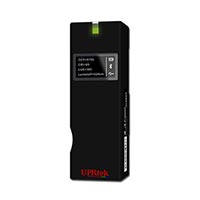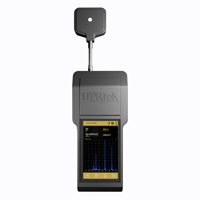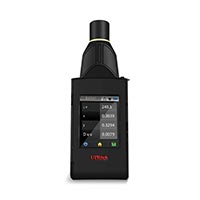Biodiversity Policy
Biodiversity Policy
Description
In response to climate change, we have formulated a biodiversity policy to align with the company’s future development plans.
Policy Objectives
UPRtek’s mission is to assist companies and individuals in leveraging spectroscopy, optics, and semiconductor technologies to explore and discover the world of light and color. This mission enables them to identify new applications and produce precise, consistent, eco-friendly, and safer products. To achieve this, the ESG Sustainability Management Committee is tasked with formulating sustainable strategies and policy guidelines and driving management plans. Starting in 2025, the company will annually report the economic, environmental, and social sustainability outcomes to the Board of Directors, which will serve as the highest supervisory body.

Scope of Policy
This policy applies to all units, operations, and employees of the company. It includes but is not limited to product design, manufacturing, operations, and maintenance processes. We will also promote compliance with this policy among upstream suppliers and other partners.
Policy Content
Definition of Biodiversity
According to the Convention on Biological Diversity, biodiversity refers to “the variability among living organisms from all sources, including terrestrial, marine, and other aquatic ecosystems, and the ecological complexes of which they are part; this includes diversity within species, between species, and of ecosystems.”
UPRtek’s Biodiversity Policy Goals
We aim to achieve zero net deforestation, zero net loss, and net positive benefits. This will be accomplished through avoidance, mitigation, restoration, offsets, and additional conservation actions within the company’s operational scope, in collaboration with stakeholders.
The commitments and guidelines include:
(1) Conduct regular natural and biodiversity risk assessments to understand the company’s dependence on, impact on, risks to, and opportunities related to nature across its operations and value chain.
(2) Avoid establishing new operational sites in areas designated as critical habitats or biodiversity-sensitive regions, as defined internationally or nationally, or in nearby areas that affect ecological corridors, hydrology, or vegetation.
(3) When constructing new facilities, adopt the best feasible low-impact building methods and prioritize incorporating biodiversity measures outlined in local green building standards.
(4) Set measurable management objectives for priority ecological issues based on biodiversity risk assessment results, implement mitigation actions, and measure performance to achieve zero net loss.
(5) Assess product and service lifecycles, particularly upstream activities and their ecological impacts, to incorporate circular economy principles, increase the proportion of recycled materials, and reduce habitat destruction caused by raw material extraction or high-impact materials.
(6) To mitigate biodiversity impacts associated with climate change, conduct due diligence on renewable energy sources (purchased or self-generated), monitor and identify ecological impacts, and implement local or remote restoration actions to minimize ecological impacts.
(7) Strictly comply with regulatory requirements, establish internal monitoring systems to fulfill commitments, and engage with value chain partners to proactively prevent deforestation.
(8) Implement nature-based climate solutions tailored to the ecosystems surrounding operational locations (terrestrial, freshwater, or marine), prioritize biodiversity-enhancing practices, and ensure long-term ecological monitoring and maintenance.
(9) Stay informed of international trends and standards, establish a scientific foundation, and continue driving biodiversity initiatives with performance disclosures.
Policy Implementation
Roles and Responsibilities
Clearly define the responsibilities of all management levels and employees to ensure effective implementation of the policy.
Internal Audits
Conduct regular audits to assess policy implementation and ensure compliance with standards.
External Certification
Actively seek third-party certifications to ensure management systems meet international standards.
Continuous Improvement
Improve sustainability policies based on audit results and external feedback.
Stakeholder Engagement
Information Disclosure
Regularly publish sustainability reports to disclose environmental and social performance to stakeholders.
Feedback Mechanisms
Establish effective communication channels to receive and respond to stakeholder feedback.
Policy Effectiveness
This policy is effective from the date of announcement and will be reviewed and updated periodically to ensure its validity and applicability in light of internal and external environmental changes.
We are committed to integrating the concept of sustainable development into every aspect of our operations and striving to become a benchmark enterprise in the industry.









